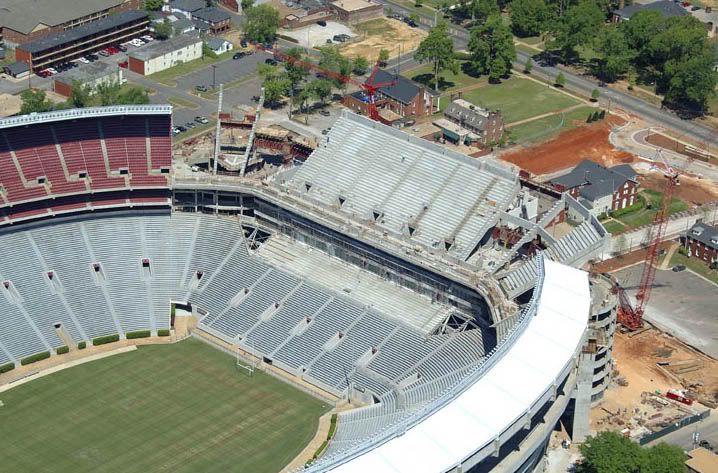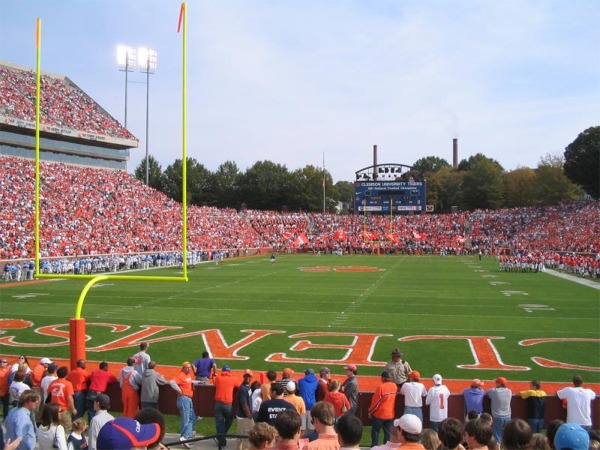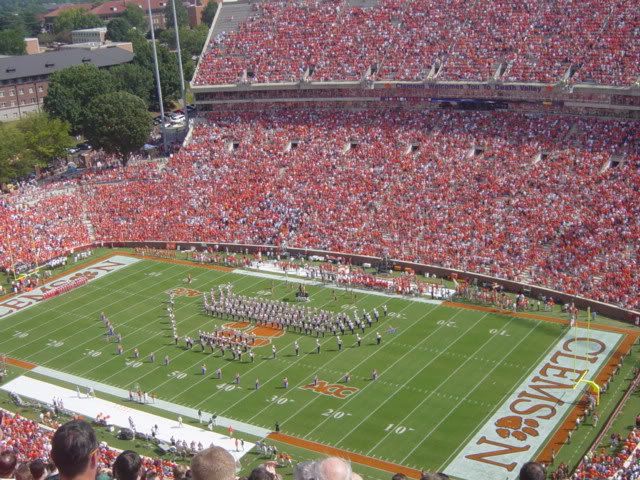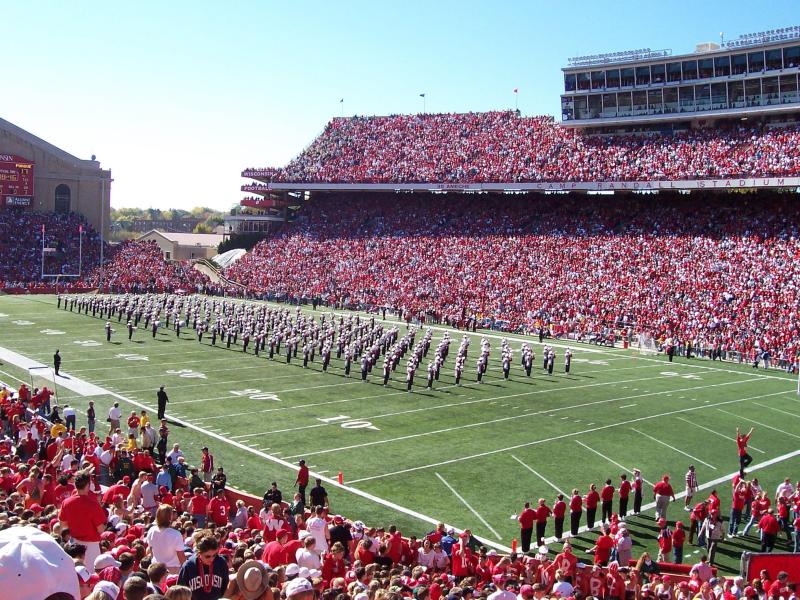Capacity: 82,112
The University of Oklahoma, often called OU or Oklahoma is an institution of higher learning located in Oklahoma. The university was founded in 1890. It currently enrolls 31,134 students (27,807 at its largest Campus in Norman, Oklahoma not far from Oklahoma City).
OU plays is a prominent member of the Big 12 conference, playing in the South division with Oklohoma State, Texas, Baylor, Texas Tech and Texas A&M. Oklahoma is considered by many to be a top five all-time football program. The Sooners possess seven poll-determined national championships in football, with the 1950, 1955, 1956, 1974, 1975, 1985, and 2000 seasons featuring the top team in the Associated Press final poll, along with the 2000 Bowl Championship Series National Championship. They have also won 39 conference championships making them the most decorated college in the Big 12.
The University of Oklahoma has had a long and bitter rivalry with the University of Texas known as the Red River Shootout or Red River Rivalry. This is often thought of as a contest of state pride along with school pride. The match is one of the last remaining regular season neutral-site games. It is played at the Cotton Bowl in Dallas at the same time and place as the Texas State Fair. Dallas is roughly halfway between Norman, OK and Austin, TX. The stadium is split down the middle, one half burnt orange for Texas and the other crimson for Oklahoma.

Texas leads the all-time series 56-39-5, with a 44-35-4 edge in Dallas, but Oklahoma had won 5 consecutive years before Texas won the 2005 game. Four of the last six showings featured one of the participants in the BCS National Championship Game.

Oklahoma also has had a longstanding rivalry with Oklahoma State University called the Bedlam Series that encompasses all the athletic contests between the two universities, the winner receiving the Bedlam Bell. The football rivalry, while intense, remains lopsided, being 77-16 in favor of the Sooners. OU's other major historic rival is the University of Nebraska, who were part of the Big 8 Conference with OU, and who joined with OU and other schools in the formation of the Big 12 Conference in 1996.


Memorial Stadium has been the home of the Oklahoma Sooners for more than eight decades. In the early 1920’s a group of students formed a committee to look at a new stadium for the football stadium. Support increased, and by 1921 construction began on a new facility. Completed in two years, Memorial Stadium was named in honor of University personnel who died in World War I. The Sooners played their first game at Memorial Stadium on October 20, 1923. Built at a cost of $293,000 the stadium originally had a seating capacity of roughly 16,000 on the west side of the field. As support for the team grew, so did the stadium.

In 1929 an additional 16,000 seats were added to the east side of Memorial Stadium. By 1949, the playing field was lowered and the running track was removed. New seating areas along the field and in the north end zone increased the capacity to 55,000.

Two years later bleachers were added in the south end of the stadium. Prior to the start of the 1970 season, the Sooners decided to replace the grass field with Astroturf. The upper deck on the west side and press box were constructed in 1975 boosting the capacity to 70,000.

By 1980 the temporary bleachers that had been in the south endzone since 1957 were removed and replaced with permanent ones, giving Memorial Stadium a seating capacity of 75,000. The artificial surface was removed before the 1994 season and replaced with natural grass. In 1995, nine suites were constructed on the west side, a new video/scoreboard was installed along with lights.

The latest renovation has occurred during the past couple of years. Prior to the 2003 season, 8,000 seats and 27 luxury suites were added on the east side.

The Stadium was renamed to The Gaylord Family - Oklahoma Memorial Stadium. The Gaylords gave $50 million dollars towards the expansion/renovation in exchange for the name change.
West Side:

A new brick exterior was also added to Memorial Stadium with the 2003 expansion.

Today, the stadium has a seating capacity of 81,207 and is the largest sporting arena in the state. The record attendance for the stadium was set during a 2005 contest against Texas A&M with 84,943 attending.

In 2005, the Sooners finished the regular season with an adequate 7-4 record which scored them to an invitation to the Holiday Bowl in San Diego. They beat Oregon 17-14. At home, they averaged 84,331 fans to their 6 home games making them the 9th most popular team in college football (and ahead of a lot of NFL franchises).
Next: back to Florida to look at the Gators’ arch-rival, the Florida State Seminoles. I thought the ‘Noles might be further up the capacity list than the Sooners but their stated capacity of 82,300 is only approximate as far as I’m concerned. And I just did all this work on Oklahoma!









































